Table of Contents
Aquatic plants are plants adapted to living in water environments, whether in saltwater or freshwater. They are also known as hydrophytes or macrophytes, which differentiates them from algae and other small plants. Macrophytes are plants that grow in or near water, either emerging from the water, submerged, or floating on the surface. In lakes and rivers, macrophytes provide shelter for fish, support for aquatic invertebrates, produce oxygen, and serve as food for some fish and wildlife.
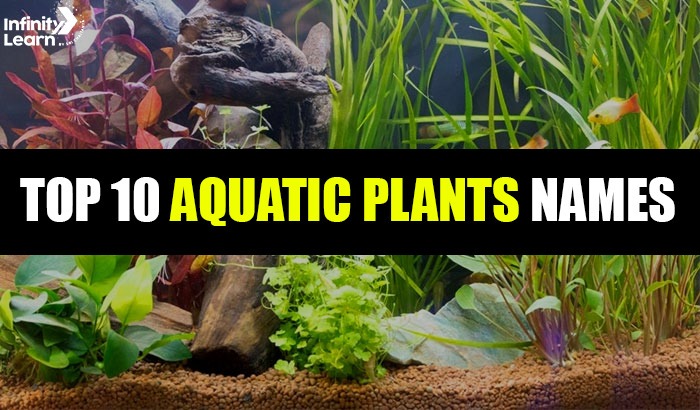
Macrophytes are primary producers and form the base of the food web for many organisms. They significantly impact soil chemistry and light levels by slowing down water flow, capturing pollutants, and trapping sediments. This process allows excess sediment to settle at the bottom, aided by the presence of plant stems, leaves, and roots. Some plants can absorb pollutants into their tissues. While seaweeds are similar in ecological impact to larger water plants, they are not usually called macrophytes.
Aquatic plants need special adaptations to live submerged in water or at the water’s surface. Common adaptations include lightweight internal packing cells called aerenchyma, floating leaves, and finely divided leaves. Aquatic plants can only grow in water or in soil that is often saturated with water, making them common in wetlands. The Amazon water lily is one of the largest aquatic plants, while minute duckweed is one of the smallest. Many small aquatic animals use plants like duckweed for shelter or protection from predators. Other well-known aquatic plants include floating heart, water lily, lotus, and water hyacinth.
Types of Aquatic Plants
Aquatic plants, also known as hydrophytes, are specialized plants that thrive in water environments, whether freshwater or saltwater. They play a crucial role in aquatic ecosystems, providing oxygen, shelter, and food for various aquatic organisms. Aquatic plants are broadly categorized into three main types based on their growing habits and adaptations to water environments: submerged, emergent, and free-floating plants. Here’s a detailed look at each type:
Submerged Aquatic Plants
Submerged aquatic plants grow entirely underwater, with their roots anchored in the sediment. They are fully adapted to live submerged in water, and their leaves and stems are often thin and flexible to move with water currents.
Characteristics
- Leaves and stems: Typically thin and feathery to reduce resistance to water flow and maximize light absorption.
- Roots: Anchor the plant in the substrate, though some species can absorb nutrients directly from the water through their leaves.
Examples
- Elodea (Elodea canadensis): Commonly used in aquariums, this plant helps oxygenate water and provides habitat for small fish.
- Hornwort (Ceratophyllum demersum): This plant floats freely in the water column and is effective at oxygenating the water and controlling algae growth.
- Eelgrass (Zostera spp.): Found in coastal waters, eelgrass provides essential habitat for marine life and stabilizes sediment.
Emergent Aquatic Plants
Emergent aquatic plants are rooted in the substrate with their stems, leaves, and flowers extending above the water surface. These plants are commonly found along the edges of ponds, lakes, and wetlands.
Characteristics
- Roots: Anchored in the soil or sediment, often in shallow water.
- Stems and leaves: Extend above the water surface, allowing the plant to access air and sunlight.
Examples
- Cattails (Typha spp.): Recognizable by their tall, cylindrical flower spikes, cattails are commonly found in wetlands and provide habitat and food for wildlife.
- Lotus (Nelumbo nucifera): Known for its broad, plate-like leaves and stunning flowers, the lotus is rooted in the mud and has stems that rise above the water.
- Water lilies (Nymphaea spp.): These plants have round floating leaves and beautiful flowers that rest on the water’s surface, with roots anchored in the sediment.
Free-Floating Aquatic Plants
Free-floating aquatic plants float on the water’s surface without being anchored by roots to the substrate. They can move freely with water currents and often form dense mats that can cover large areas of water bodies.
Characteristics
- Roots: Dangling in the water, primarily for nutrient absorption rather than anchoring.
- Leaves and stems: Adapted to float on the water’s surface, often with air-filled tissues for buoyancy.
Examples
- Duckweed (Lemna minor): One of the smallest flowering plants, duckweed forms dense mats on the water surface and provides food for waterfowl.
- Water hyacinth (Eichhornia crassipes): Known for its beautiful flowers, this invasive species forms large floating mats that can quickly cover water surfaces.
- Water lettuce (Pistia stratiotes): Resembling a floating head of lettuce, this plant provides cover and habitat for aquatic life while helping to improve water quality.
Also Check: Medicinal Plant Names
10 Aquatic Plants Names with Images
Amazon Water Lily (Victoria amazonica)
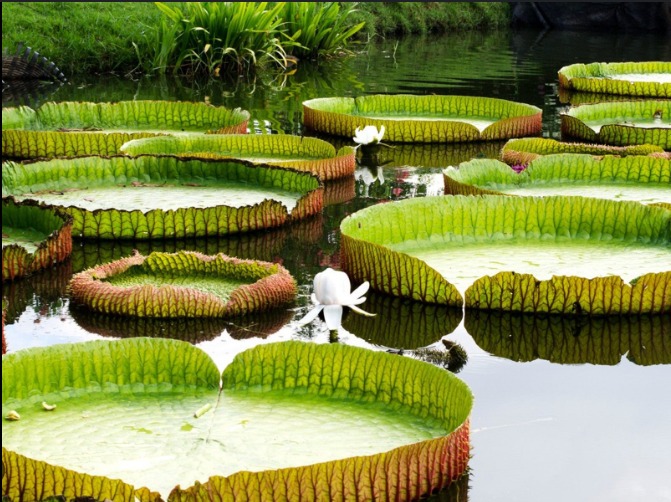
The Amazon water lily is renowned for its massive, round leaves that can reach up to three meters in diameter. Native to the Amazon River basin, this plant is not only a marvel due to its size but also for its beautiful white and pink flowers. The leaves are buoyant enough to support the weight of a small child, thanks to their sturdy structure and air-filled tissues.
Benefits
- Provides shade and reduces water temperature.
- Offers habitat and breeding ground for fish and insects.
- Absorbs excess nutrients, helping to keep water clean.
Duckweed (Lemna minor)
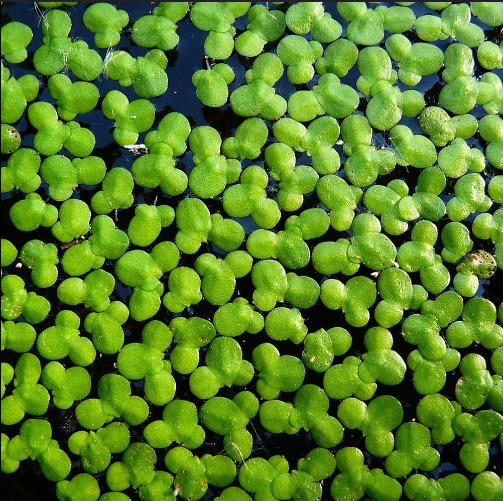
Duckweed is one of the smallest and fastest-growing aquatic plants. These tiny, free-floating plants can form dense mats on the water’s surface, providing food for waterfowl and fish. Despite their small size, duckweeds play a significant role in water ecosystems by absorbing nutrients and heavy metals.
Benefits
- Acts as a natural water purifier.
- Serves as a food source for aquatic animals.
- Provides cover and habitat for microfauna.
Floating Heart (Nymphoides peltata)
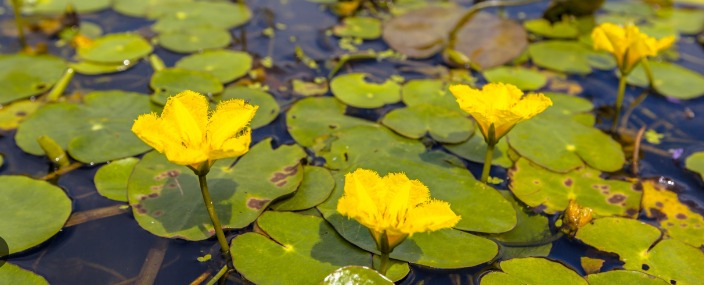
The floating heart plant features heart-shaped leaves that float on the water’s surface, along with delicate yellow flowers. It is commonly found in slow-moving or still waters like ponds and lakes. This plant is valued for its aesthetic appeal and its ability to provide cover for aquatic life.
Benefits
- Helps stabilize the water temperature.
- Reduces algae growth by shading the water.
- Provides habitat for fish and insects.
Water Lily (Nymphaea spp.)
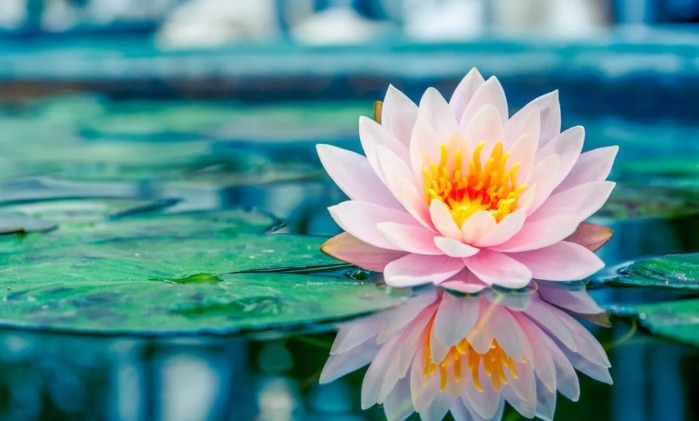
Water lilies are among the most iconic aquatic plants, known for their round floating leaves and striking flowers that come in various colors, including white, pink, yellow, and blue. These plants are often seen in ponds, lakes, and slow-moving streams.
Benefits
- Enhances the aesthetic appeal of water bodies.
- Provides shelter and breeding grounds for fish and amphibians.
- Improves water quality by absorbing nutrients.
Lotus (Nelumbo nucifera)

The lotus plant is revered in many cultures and is known for its large, round leaves and stunning flowers that emerge above the water’s surface. The lotus is not only a symbol of purity but also plays a vital role in its ecosystem.
Benefits
- Promotes biodiversity by providing habitat for various species.
- Helps control water temperature and reduce evaporation.
- Absorbs pollutants and improves water quality.
Water Hyacinth (Eichhornia crassipes)
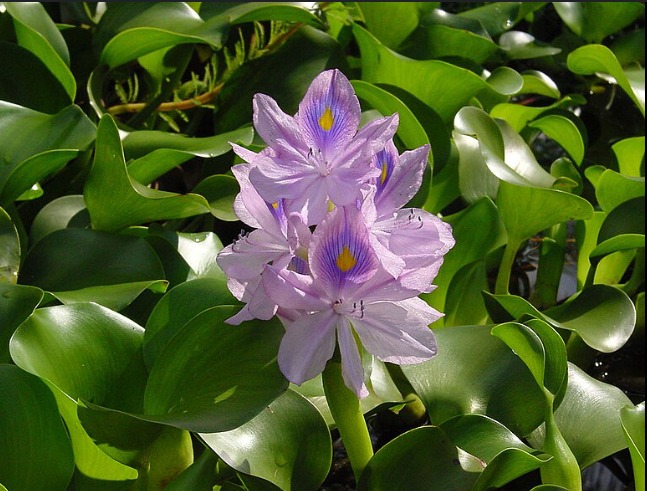
Water hyacinth is a free-floating perennial plant with broad, thick leaves and striking lavender-blue flowers. While it is beautiful, it is also known for its rapid growth, which can sometimes lead to it becoming invasive.
Benefits
- Acts as a natural water filter by absorbing heavy metals and toxins.
- Provides habitat for fish and other aquatic organisms.
- Can be used in wastewater treatment due to its high absorption capacity.
Cattails (Typha spp.)
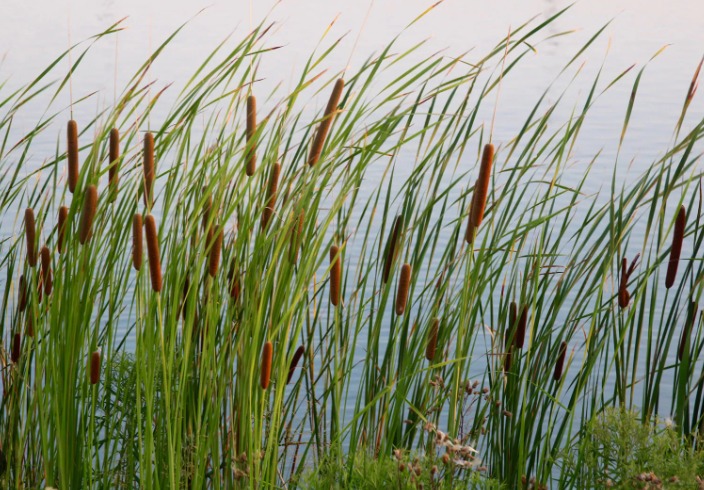
Cattails are tall, grass-like plants commonly found in wetlands. They are easily recognizable by their brown, cylindrical flower spikes. Cattails play a crucial role in wetland ecosystems by providing food and habitat for wildlife.
Benefits
- Stabilizes soil and prevents erosion.
- Filters pollutants and improves water quality.
- Provides food and shelter for birds and insects.
Hornwort (Ceratophyllum demersum)

Hornwort is a submerged plant that can grow up to 10 feet long. It has no roots and derives its nutrients directly from the water. This plant is often used in aquariums and ponds due to its ability to oxygenate water and provide cover for fish.
Benefits
- Oxygenates the water, benefiting fish and other aquatic life.
- Helps control algae growth by competing for nutrients.
- Provides habitat for small aquatic creatures.
Anacharis (Egeria densa)
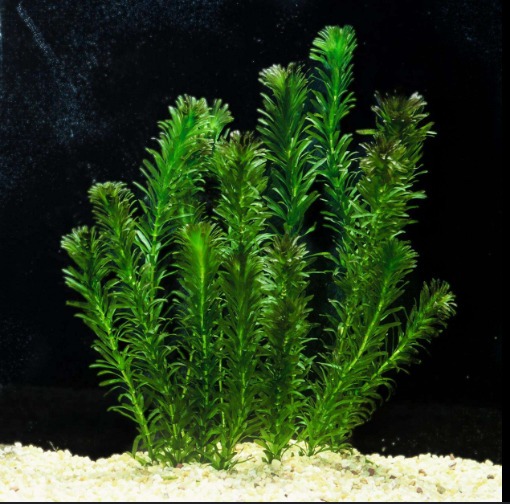
Anacharis, also known as Brazilian waterweed, is a popular aquarium plant. It has long, bright green leaves and can grow submerged in water. This plant is known for its ability to oxygenate water and its usefulness in controlling algae.
Benefits
- Improves oxygen levels in water.
- Provides cover and breeding grounds for fish.
- Helps maintain water clarity by absorbing excess nutrients.
Water Lettuce (Pistia stratiotes)

Water lettuce is a free-floating plant with rosettes of thick, velvety leaves that resemble lettuce. This plant is found in tropical and subtropical regions and can form dense mats on the water’s surface.
Benefits
- Reduces algae growth by shading the water.
- Provides habitat for fish and other aquatic animals.
- Acts as a natural filter by absorbing pollutants and excess nutrients.
Benefits of Aquatic Plants
- Enhances Ornamental Value: Growing aquatic plants may require effort, but their beauty makes it worthwhile. These plants add a unique touch of greenery and elegance to water features, enhancing the overall decor.
- Creates a Water Ecosystem: When you grow underwater or floating aquatic plants, you create a thriving ecosystem for various water wildlife. Just as soil plants attract landscape wildlife, aquatic plants draw in natural elements specific to water habitats.
- Cleans the Water: Aquatic plants help clean the water by absorbing excess nutrients, which improves the water quality and reduces algae growth. This means you can use garden sprinklers around ponds without worrying about algae issues.
- Provides Food: If you have a pond with fish, aquatic plants can serve as a consistent food source. These plants are also popular in aquariums, where they clean the water and enhance its appearance.
- Takes Center Stage: No matter how many landscape plants you have, aquatic plants will always draw attention. They create a focal point in any garden, especially when placed in or around seating areas.
Care Guidelines for Aquatic Plants
- Choose the Right Location: Decide where you want to grow your aquatic plants. Whether it’s a pond, tank, or container, select a spot where the plants can thrive.
- Provide Adequate Light: Ensure your aquatic plants get some sunlight when outdoors. If they’re in an aquarium, provide artificial lighting. Different plants have different light requirements, so check what your plant needs.
- Use Clean Water: Make sure the water is clean and clear to minimize obstacles for the plants.
- Add Garden Stones and Pebbles: Layer the container with garden stones and pebbles to create a defined water body.
- Ensure Adequate CO2: Water provides CO2 for aquatic plants, which they use along with oxygen to grow. Make sure your plants have access to these essential gases.
- Use Liquid Fertilizers: Aquatic plants also need nourishment, which you can provide through liquid fertilizers.
- Consider Plant Preferences: Aquatic plants for fish differ from other water plants, so understand their specific needs before adding them to your pond or aquarium.
FAQs on Top 10 Aquatic Plants Names
How Long Will My Aquatic Plants Live?
The best aquatic plants can last for a few months before going into dormancy. Each type has different maturity periods and lifespans.
How Do Aquatic Plants Grow?
Popular aquatic plants need sunlight and water to grow. Water provides carbon dioxide, and nutrient-rich fertilizers containing potassium, nitrogen, and phosphorus promote growth.
Do Aquarium Plants Clean Water?
Yes, aquatic plants clean water by removing toxic metals and other contaminants. They also absorb carbon dioxide and release oxygen, benefiting aquatic wildlife.
Is It Challenging To Grow Aquatic Plants?
Growing aquatic plants is not difficult if proper guidelines are followed. Some plants are very easy to propagate from the beginning.
What Are Five Aquatic Plant Names?
Five examples of aquatic plants are duckweed, floating heart, water lily, lotus, and water hyacinth. These plants provide homes and protection for small aquatic animals.
What Are Aquatic Plants for Class 4?
Aquatic plants live in or on water and are also called hydrophytic plants. They have special features like air sacs for flotation, more stomata, and specialized roots to absorb oxygen.
Is Lotus an Aquatic Plant?
Yes, the lotus is an emerged aquatic plant with broad, plate-like leaves. Its roots are fixed in the soil, and its stems emerge several inches above the water.
What Are the Three Types of Aquatic Plants?
The three main types of aquatic plants are submerged, emergent, and free-floating. These categories help us understand how different plants live and grow in water.
Is Cactus an Aquatic Plant?
No, cactus is not an aquatic plant. While lotus, duckweed, and water lily are aquatic plants, cactus is a desert plant.








